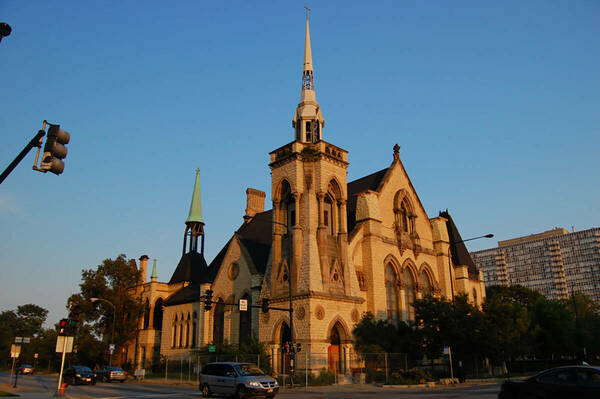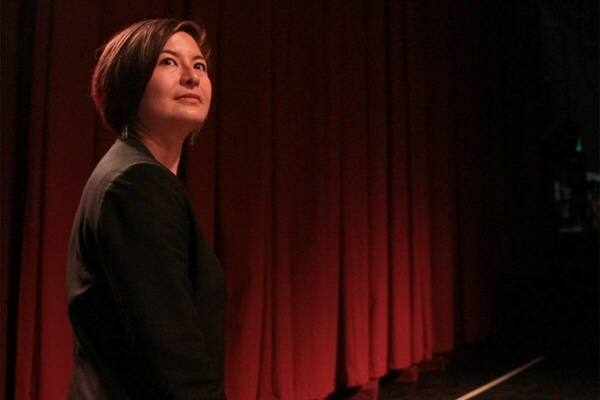
A University of Notre Dame sociology professor is co-leading a groundbreaking study that will examine whether the density of congregations within communities ultimately influences residents’ livelihoods, such as their well-being, pro-social behavior, political mobilization, informal social support, access to social services, feelings of safety, and a sense of belonging.
Currently, no comprehensive catalogs of congregations within U.S. communities exist, and the Chicago Congregations Project (CCP) is aiming to remedy that by starting in the Windy City.
Led by Kraig Beyerlein, an associate professor in the Department of Sociology, the CCP is advancing research of religious organizations by compiling the approximate census of congregations to examine their impact on the lives of Chicago residents.
When Beyerlein first came to Notre Dame over a decade ago, he recognized Chicago’s significance given its religious diversity and it being one of the most studied cities in urban sociology.
“At the same time, religion has generally been absent in the broader sociological research in Chicago, especially the role of congregations in shaping communities and their residents,” Beyerlein said.
Given the University’s support and interest in religious-focused research, Beyerlein saw an opportunity.
“There’s little quantitative work on religion in the Windy City,” Beyerlein said. “So it was always on the back of my mind: ‘We should do something.’”
Counting congregations
Beginning in January 2022, Notre Dame student research assistants with the CCP team have used Google Street View to virtually traverse streets in urban neighborhoods that make up the 77 Chicago community areas.
This initial list was then checked for accuracy and compared to information found through public information forums, such as websites and pre-existing lists of congregations. Additionally, the team has physically driven and walked streets in a sample of the communities to document congregations and compare to the virtual canvassing.
To date, Beyerlein and his team have identified more than 3,000 active congregations in Chicago, including churches, mosques, synagogues, and temples.

“It’s frustrating that we don’t have a comprehensive list of congregations within communities across the United States. But given the methodological barriers and enormous resources required, it’s also understandable,” Beyerlein said. “Without this list, however, it is difficult to address many fundamental questions and debates about religion and public life.”
The issues Beyerlein and his colleagues plan to examine include what the social consequences of congregations for communities are, to what extent they broadly promote the common good, and whether their social effects vary for religious and non-religious residents as well as across different types of communities.
“Not only are answering such questions important for scholarship on religion, but they have implications for grassroots organizing and public policies,” said Beyerlein, who also serves as director of the Center for the Study of Religion and Society (CSRS).
Other participants in the CCP include co-project leader Ricardo Martinez-Schuldt of Rutgers University; Peter Ryan, associate director of the CSRS; Matthew Sisk of Notre Dame’s Lucy Family Institute for Data and Society; Michael Emerson of Rice University; and Brie Loskota, former director of the University of Chicago’s Martin Marty Center and current affiliate of the CSRS.
As the congregations were identified, gathering information about them presented occasional difficulties.
Researchers have to verify if buildings with religious symbols or signs were currently operating congregations and also capture nuances that affect the overall count of congregations within communities.
For example, Catholic churches that are part of the same parish — and often share leadership — may appear to be one congregation, but they are actually distinct congregations. And multiple Jehovah’s Witnesses congregations were found to be meeting in the same building, so what would appear to be one congregation is actually many.
“Understanding such complexities is crucial to building an exhaustive as possible list of congregations within communities,” Beyerlein said.
The link between congregation and residential life
To gather more information about congregations, CCP researchers are working with the research organization NORC at the University of Chicago and conducting surveys with congregations from the list in a sample of Chicago communities. Religious leaders complete the survey that includes questions about congregations’ size, religious activities, community engagement, and outreach programs.
Funding for the mapping of Chicago congregations and the NORC survey is provided by grants from Notre Dame Research, the College of Arts & Letters, the Institute for the Study of the Liberal Arts, and the Louisville Institute.

All of the painstaking work to generate the approximate census of congregations is critical for the CCP’s goal of assessing the impact of local religious ecology on residents’ lives.
With the support of a nearly $260,000 Templeton Religion Trust grant, as well as funding from Notre Dame’s Democracy Initiative and other University entities, the CCP team is coordinating with the firm RTI International — which conducts the Healthy Chicago Survey — to survey over 2,500 residents in Chicago communities.
After the data points are collected, they will be linked with the CCP data and other relevant community-level information, such as household income and the racial makeup of a neighborhood.
"We can't wait to get the data on Chicago residents,” Beyerlein said. “Combined with the CCP, these data constitute an unprecedented opportunity for us to investigate the potential impact of congregations on various aspects of people's lives in a major urban area in the United States.”
Utilizing statistical modeling to analyze the information for the combined effort, the research team will ultimately be able to compare how the presence of a community congregation can affect religious and non-religious residents' health, how often they volunteer or receive informal help, or how connected they feel to neighbors, among other individual-level outcomes.
And they hope Chicago is just the beginning.
“Given the rich data assembled in this Chicago study, we hope to raise more funds to expand it to other cities,” Beyerlein said. “Doing so will allow us to observe the extent of which the impact of local religious ecology varies from city to city.”


